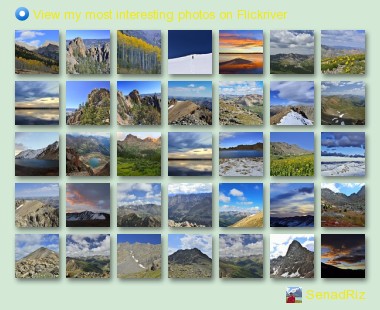Santa Fe is the site of both the oldest public building in
America, the Palace of the Governors:, and the nation's oldest community
celebration, the Santa Fe Fiesta, established in 1712 to remember the Spanish
reconquest of New Mexico in the summer of 1692
The city has been the capital for the Spanish "Kingdom
of New Mexico," the Mexican province of Nuevo Mejico, the American
territory of New Mexico (which contained what is today Arizona and New Mexico)
and since 1912 the state of New Mexico.
1050 to 1607 Santa
Fe
The "Kingdom
of New Mexico " was first claimed
for Spain by the
conquistador Don Francisco Vasques de Coronado in 1540, 67 years before the
founding of Santa Fe
Don Juan de Onate became the first Governor-General of New
Mexico and established the capital in 1598 at San Juan Pueblo, 25 miles north
of Santa Fe Santa Fe
1607 to 1692 Spanish soldiers and officials, as well as
Franciscan missionaries, tried to conquer and convert the Pueblo Indians of the
region.
Pueblo Indians revolted against the estimated 2,500 Spanish
colonists in New Mexico , killing 400 of them
and driving the rest back into Mexico Pueblos attacked Santa Fe Santa Fe
1692 to 1821 Santa
Fe
1821 to 1846 Mexico
gained its independence from Spain ,
and Santa Fe became the capital of the province of New Mexico Missouri Santa
Fe and New Mexico Mexican
Republic
For a brief period in 1837, northern New Mexico Santa Fe
1846 to 1912 In the early period of the Mexican American
War, an American army general, Stephen Watts Kearny, took Santa Fe and raised
the American flag over the Plaza. Two years later, Mexico
signed the Treaty of Guadalupe Hidalgo, giving New Mexico
(including what we now call Arizona ) and California to the United States
In 1851, Jean B. Lamy, arrived in Santa Fe Santa
Fe Atchison , Topeka
and the Santa Fe Railroad and the invention of the telegraph in 1880, Santa Fe and New
Mexico New Mexico Santa Fe
1912 to present The Museum of New Mexico had opened in 1909,
and by 1917, its Museum
of Fine Arts Santa Fe
Although Santa Fe
Today, Santa Fe is recognized as one of the most intriguing
cities in the nation, due largely to the city's preservation of historic
buildings and a modern zoning code, passed in 1958, that mandates the city's
distinctive Spanish-Pueblo style of architecture This architecture is based on
the adobe (mud and straw) and wood construction of the past. Also preserved are
the traditions of the city's rich cultural heritage which helps make Santa Fe
































2 komentari:
Great shots Senad and write up too. Looks a very photogenic place, love the doors and chilly peppers.
Thanks Anthony, very interesting place for sure.
Objavi komentar